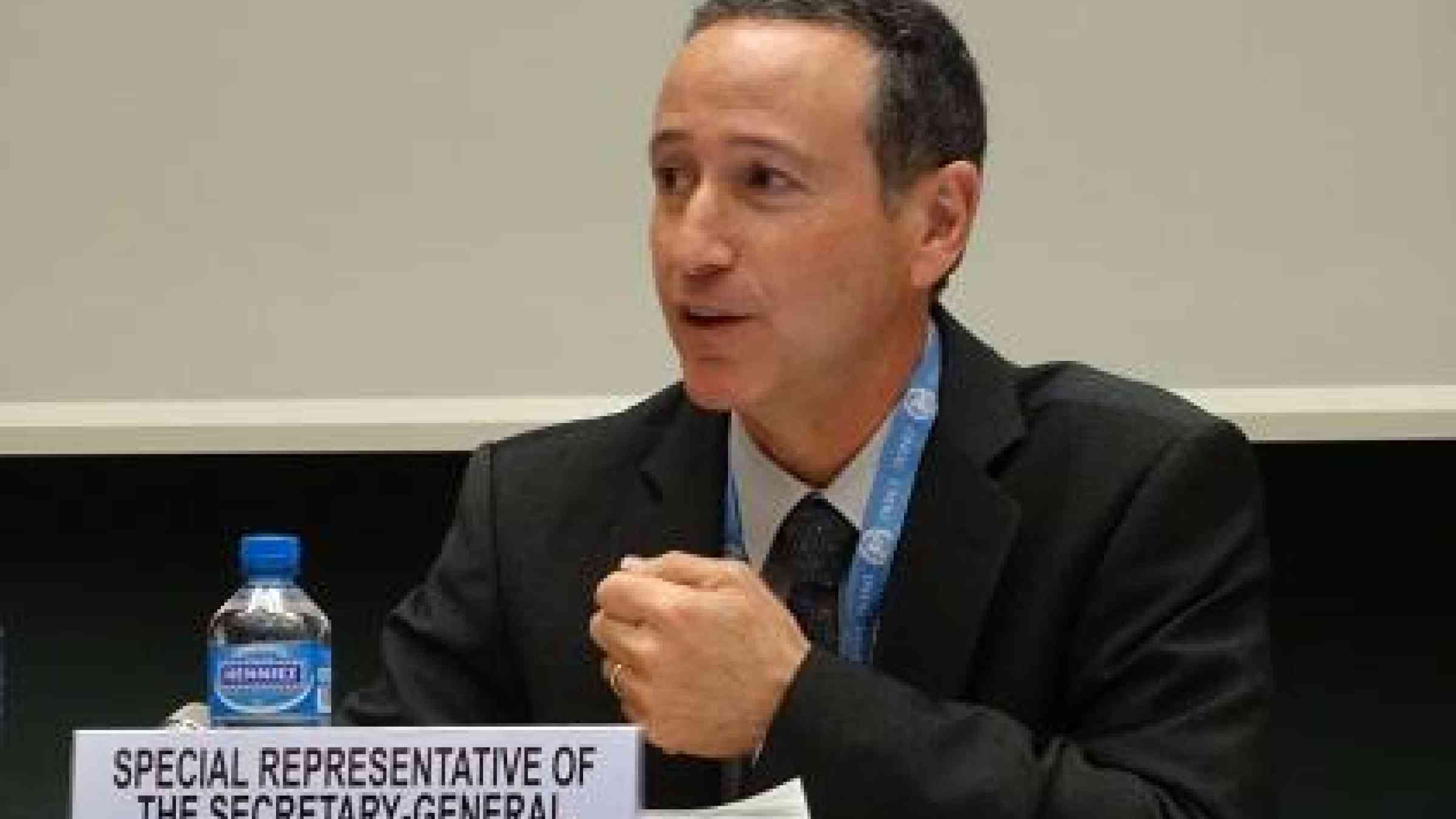Countries back disaster risk reduction benchmarks

GENEVA, 18 November 2016 – Negotiators today wrapped up talks on how to measure global progress in implementing the Sendai Framework for Disaster Risk Reduction, the world’s most ambitious plan to date for curbing the impact of natural and human-induced hazards.
The weeklong session in Geneva of the Open-ended Intergovernmental Working Group on Indicators and Terminology Relating to Disaster Risk Reduction, or OIEWG, saw diplomats and technical experts craft point-by-point a detailed set of benchmarks for success.
The package will be put to the UN General Assembly for approval early in 2017.
"It’s really an unprecedented achievement in this field," said Mr. Robert Glasser, the Special Representative of the UN Secretary-General for Disaster Risk Reduction.
"Behind these indicators is impact. What you don’t measure doesn’t tend to happen, all other things being equal. We’ve made it much more likely that things will happen. It’s a remarkable contribution to reducing disaster risk, one of the major challenges of our time in the face of climate change," he told delegates.
"This is an important contribution to pushing open multilateralism," which is under growing pressure, he added.
The aim of setting out metrics and common terms for risk reduction is to help countries keep track of progress in applying the Sendai Framework, a 15-year agreement adopted by the international community in March 2015.
“This session is an important moment, maybe the moment of truth, for the Sendai Framework,” said Ms. Setsuko Saya, Director of the Cabinet Office of Japan, whose country hosted the global conference where the agreement was settled.
The Sendai Framework is a key element of the wider global drive to make development sustainable by 2030, given that disasters can set development back years. It is closely interlinked with the Sustainable Development Goals, the Paris Agreement on climate change, and other international accords.
“The Sendai Framework emphasises the importance of moving from managing disasters to managing and reducing disaster risk if we are to achieve substantial reductions in disaster mortality, numbers of people affected, economic losses and damage to critical infrastructure,” said Mr. Glasser earlier in the meeting.
He underscored the framework’s four priorities for action.
“We need development policies and practices that take account of disaster risk in all its dimensions of vulnerability, capacity, and exposure of persons and assets. We must strengthen disaster risk governance at global, regional, national and local levels,” he said.
“We need increased investments in disaster risk reduction from both private and public sectors. There is growing understanding of the importance of a risk-sensitive approach to major infrastructure investments in both the private and public sectors. It is important that good disaster preparedness is not just about effective response but also putting plans in place to ensure that the recovery, rehabilitation and reconstruction phase is well planned and risk-aware,” he added.
The Sendai Framework has seven targets. It aims by 2030 to reduce disaster deaths, the number of affected people and economic losses, plus damage to critical infrastructure and disruption to basic services such as health and educational facilities.
It also seeks to increase the number of countries with national and local risk reduction strategies – by 2020, the earliest deadline in the framework and a key step for meeting the other targets – as well as bolstering the capacity of developing countries, and vastly increasing coverage by early warning systems.
The plan is to begin full monitoring of progress in 2020 – a challenge, given that of the 193 UN member states, UNISDR assesses that currently there are around half the countries with half the data needed.
“Once we have the global indicators to measure progress, work to build the data and monitoring capabilities of countries must be intensified,” said Mr. Glasser.
In January, a “readiness review” will be undertaken in which countries will examine their data generation, collection, recording, synthesis and reporting capabilities, required to report against the Sendai Framework’s global targets. The review’s findings will be presented at the 2017 Global Platform for Disaster Risk Reduction in Mexico, in May.
The OIEWG process began in September 2015. A second round took place in February, and the formal sessions have been interspersed by informal talks.
Negotiators homed in on a number of key indicators.
For mortality reduction, they eyed the numbers of dead and missing, while measures for affected people have hung on illness and injury, lost or damaged dwelling, and disrupted or destroyed livelihoods.
In the area of economic losses, the goal is to measure the replacement value of lost assets, including in the agricultural sector. For infrastructure and basic services, the focus is health, education and transport.
Concerning the target on disaster risk strategies, the plan is to assess the number of national ones and the percentage of local governments with their own. For early warning systems, measures include their very existence, capacity to leverage public action, and availability of risk information to feed the warnings. In the area of enhanced international cooperation for developing countries, there was a decision to strengthen the capacity of national statistical offices and to assess spending on risk reduction.